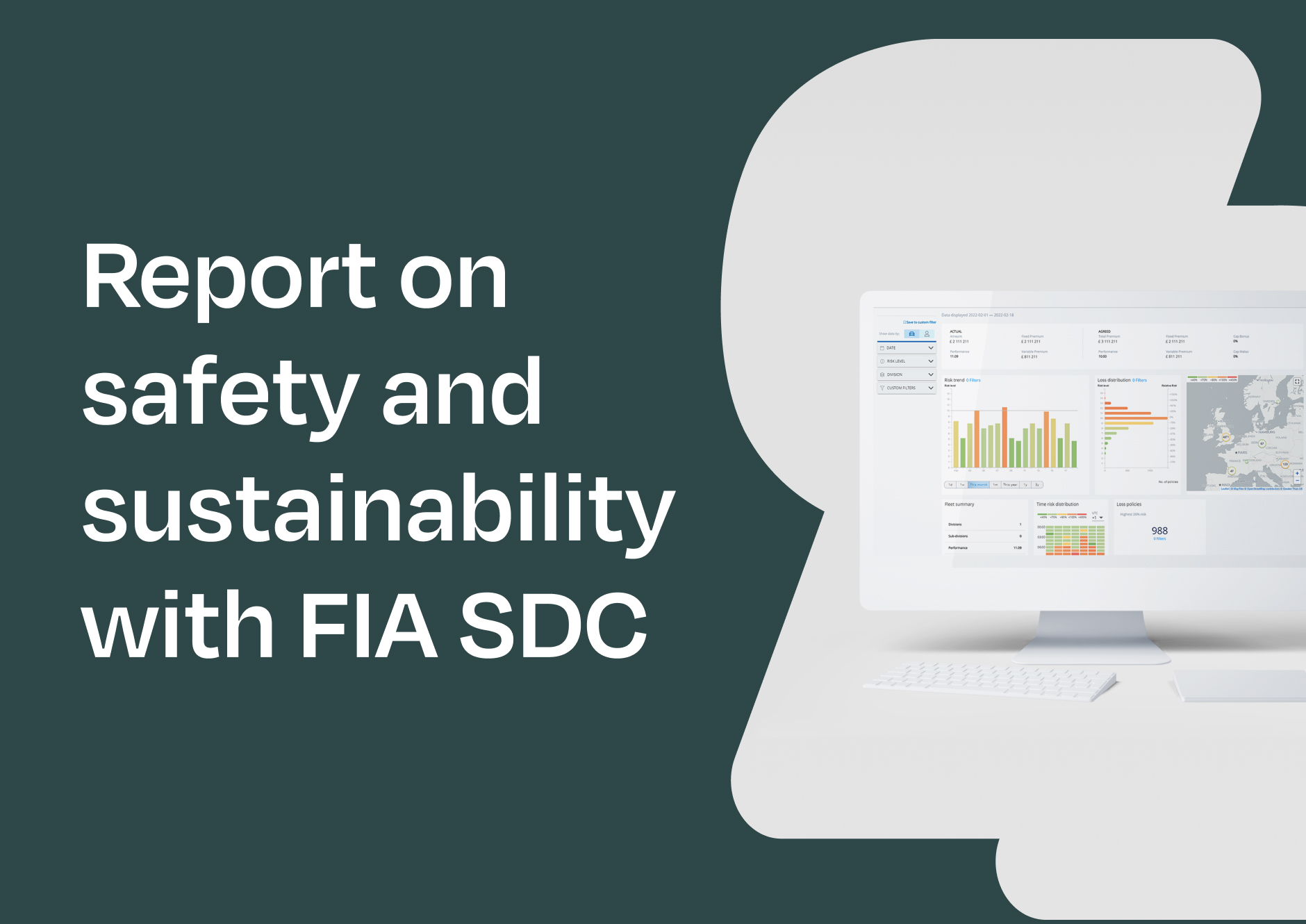


Environmental, social and governance (ESG) reporting is rapidly growing in importance. Globally, large-scale efforts are taking place to protect the environment, and people are expecting businesses to demonstrate they operate in a sustainable way.
Driver safety plays an important role in ESG reporting. Here’s why:
Crashes harm society
There is no greater potential cost than the cost of a life. Road crashes can not only cost lives and hurt loved ones, but they can also cost businesses financially, harm society and impact the environment. A collision involving a fleet driver may require medical resources, emergency transport, energy (for example at medical facilities), and may result in vehicle waste/repairs. Potentially, a crash might also result in associated traffic jams, creating unnecessary CO2 emissions.
Adopting a program to help reduce traffic crashes demonstrates that an organization understands the significant societal costs associated with collisions, and that it is taking steps to reduce its burden on society.
Smart driving is better for the environment
Driver behavior has a significant impact on both fleet safety and sustainability. Actions such as smooth acceleration and braking not only help to keep drivers safe, but also use less fuel, decreasing emissions and causing less wear and tear on the vehicle.
Smart driving programs, such as FIA Smart Driving Challenge, help encourage drivers to consider their own behaviors, and how they can contribute to safer, cleaner roads, globally.
AI insights help reduce mileage
Real-time insights into driver behavior and performance can help fleet operators make smarter decisions in terms of route optimization and smart scheduling. By helping drivers to keep moving safely and efficiently, fleet operators can reduce total fleet mileage and idle time and can also help to optimize mileage in an EV fleet.
A program based on real-time insights can place an organization at the forefront of understanding and managing the impact its fleet has on road safety and CO2 emissions.
Managing safety demonstrates responsibility
Safe driving IS eco-driving, and managing safety demonstrates that an organization is adopting a responsible approach to its transport activities.
A smart driving program that includes reporting in areas such as safety performance, CO2 emissions and CO2 reductions provides internal predictive risk data on the probability of car crashes and the environment and provides the ideal basis for ESG reporting.
A smart driving program supports UN Sustainable Development Goals
By encouraging employees to drive smart, you are supporting nine out of 17 of the UN’s Sustainable Development Goals. All sectors of society, including businesses, are encouraged to work and collaborate towards these vital goals. Providing evidence of a smart driving program that actively addresses the goals demonstrates collaboration and commitment to a cleaner planet.
Report on safety and sustainability with FIA SDC
The FIA Smart Driving Challenge (SDC) is a worldwide challenge created by the FIA in collaboration with Greater Than to encourage everyday drivers to adopt smarter, cleaner and safer driving behaviors.
The FIA SDC for business reporting package provides harmonized data on CO2 emissions, CO2 savings and safety, regardless of vehicle type and geography. This is the ideal basis for ESG reporting, and helps demonstrate your organization’s commitment to safer, cleaner roads.
Read more about the initiative here.
The FIA Smart Driving Challenge (SDC) is a worldwide challenge created by the FIA in collaboration with Greater Than to encourage everyday drivers to adopt smarter, cleaner and safer driving behaviors.
Joining the FIA SDC gives your organization the opportunity to reduce crashes, CO2 emissions and fuel consumption within your company. It also provides company-wide reporting into safety and eco-driving regardless of vehicle type or location, so you can easily identify the drivers who are increasing your company’s risk level, and fuel consumption.
Read more about the challenge here.